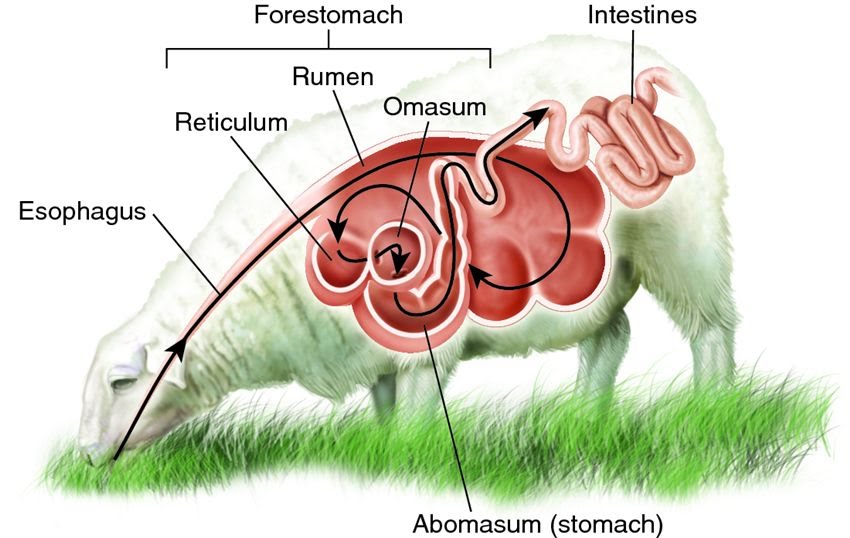Introduction
Herbivores
Carnivores
Introduction
As previously covered, herbivores and carnivores display adaptations relating to their feeding practices. These extend to the teeth, enzymes produced, length of intestine and beyond.
Herbivores
Herbivores adapted to a high cellulose diet such as ruminants have specialised teeth. They do not have incisors which are used to tear flesh in carnivores. Instead, they have a dental pad that helps chew plants. Looks so weird, took me a while to understand what was going on.

To help with the constant grinding, their teeth also grow continuously.
Gut-wise, they have four compartments: the rumen, reticulum, omasum and abomasum.

In the first two sections, the rumen and the reticulum, food is digested with saliva and a process of separation of liquids from solids takes place. The solids become the bolus.
OK, put your drink down for this bit: the food is then regurgitated to mix it with more saliva and break it into smaller pieces again. Food gets fermented by microorganisms in these two compartments.
Upon passing into the omasum, the first absorption take place in the form of water and inorganic ions being taken up into the bloodstream. Then the food arrives in the equivalent of the “stomach”, the abomasum which…
